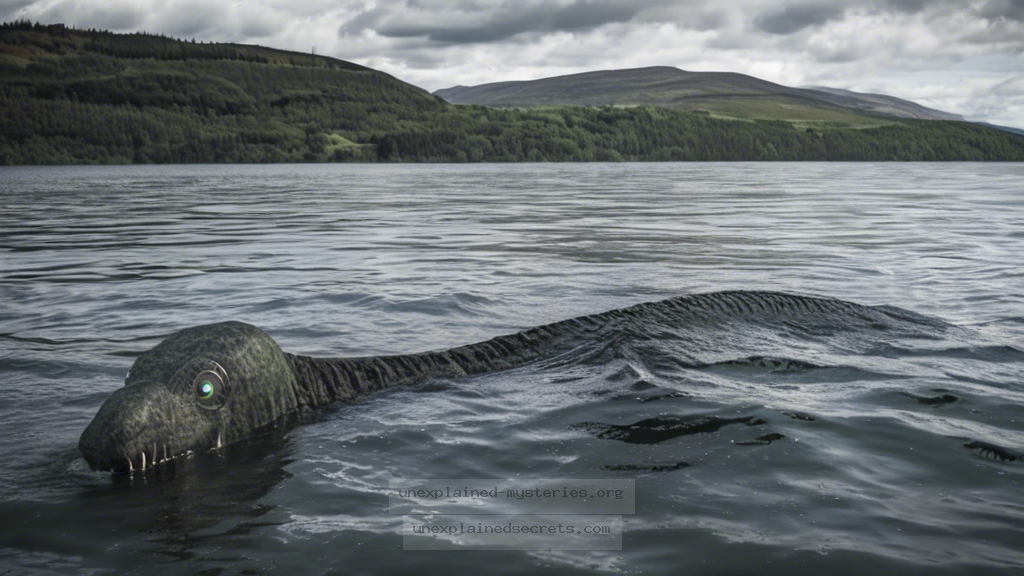Could Sonar Technology Finally Unravel the Mystery of the Loch Ness Monster?
Could Sonar Technology Finally Unravel the Mystery of the Loch Ness Monster?
The Loch Ness Monster, affectionately known as “Nessie,” has been a subject of intrigue and debate for centuries. With countless sightings, numerous investigations, and a plethora of theories, the question remains—could modern sonar technology hold the key to uncovering the truth behind this legendary creature? In this post, we will delve into the use of sonar in the quest for Nessie, examining historical accounts, technological advancements, and future implications for cryptozoological research.
Historical Context: The Legend of Nessie
The Loch Ness Monster has its roots in Scottish folklore, with tales of a great beast lurking in the depths of Loch Ness dating back to the sixth century. St. Columba, an Irish monk, is said to have encountered a creature in the loch, which he described as large and fearsome. Over the years, the legend grew, with sightings reported as early as the 1930s. The infamous photograph known as “The Surgeon’s Photo,” taken in 1934, was one of the first pieces of evidence that sparked widespread interest and debate. While it was later revealed to be a hoax, it set the stage for decades of intrigue surrounding the Loch Ness Monster.
The Role of Sonar Technology in Cryptozoology
Sonar, which stands for Sound Navigation and Ranging, is a technology that uses sound waves to detect and locate objects underwater. In the context of Loch Ness, sonar has been employed to scan the depths of the loch in search of the elusive creature. The technology has evolved significantly over the years, allowing for more accurate and detailed mapping of underwater environments. This advancement has the potential to revolutionize the search for Nessie, providing a scientific approach to a mystery steeped in folklore.
Notable Sonar Expeditions and Findings
Several notable sonar expeditions have taken place in Loch Ness over the years, each aiming to uncover the truth about the monster. One of the most significant was the “Operation Deepscan” in 1987, which involved multiple boats equipped with sonar scanning the loch’s depths simultaneously. This operation yielded several intriguing sonar contacts, leading researchers to speculate about large, unknown creatures residing in the loch. However, the findings were inconclusive, prompting further investigations.
Key Fact: Operation Deepscan utilized 24 boats and covered over 24 miles of Loch Ness, making it one of the largest coordinated searches for Nessie in history.
In more recent years, the 2018 expedition led by a team of scientists from the University of the Highlands and Islands employed advanced sonar technology, including 3D mapping and underwater drones. The team aimed to create a detailed map of the loch and to search for any unexplained anomalies. They discovered a vast array of fish species and other underwater life, but once again, no definitive evidence of Nessie was found.
Core Concepts Behind Sonar Detection
Sonar works by emitting sound pulses and measuring the time it takes for the echoes to return after bouncing off objects. There are two main types of sonar: active and passive. Active sonar emits sound waves and listens for the echoes, while passive sonar only listens for sounds made by objects in the water. In the context of Loch Ness, active sonar has been primarily used, allowing researchers to create detailed images of the underwater landscape and identify potential creatures.
Practical Implications of Sonar Findings
The implications of sonar findings extend beyond just the search for the Loch Ness Monster. The technology can provide valuable insights into the ecology of Loch Ness, helping scientists understand the health of the ecosystem and the species that inhabit it. The detection of large underwater anomalies could also inform local conservation efforts and contribute to a broader understanding of freshwater environments.
Alternative Perspectives: Skepticism and Criticism
Despite the excitement surrounding sonar technology, not everyone is convinced that it will lead to the discovery of Nessie. Skeptics argue that the lack of conclusive evidence from numerous sonar expeditions suggests that the Loch Ness Monster may be a myth rather than a real creature. Critics also point out that sonar technology has its limitations; underwater structures, schools of fish, or other natural phenomena can easily be mistaken for large creatures. This skepticism is essential for maintaining scientific rigor in investigations.
Common Misconceptions About Sonar and Nessie
There are several misconceptions regarding sonar technology and its application in the search for the Loch Ness Monster. One common belief is that sonar can detect any object in the water, regardless of size. In reality, sonar has limitations, particularly in terms of resolution. Small creatures or those that are well-camouflaged may not be detected by sonar. Additionally, some people believe that sonar can provide definitive proof of Nessie’s existence, which is misleading. Sonar can only suggest the presence of something unexplained but cannot provide conclusive evidence.
Misconception: Sonar can detect all underwater creatures without fail. Reality: Sonar has limitations and may not detect smaller or camouflaged creatures.
Best Practices for Investigating the Loch Ness Mystery
For those interested in investigating the Loch Ness Monster, several best practices can enhance the credibility of the search. First, employing a multidisciplinary approach that incorporates both scientific and anecdotal evidence can provide a well-rounded perspective. Collaborating with marine biologists, ecologists, and cryptozoologists can yield valuable insights.
Second, using a combination of technologies—such as sonar, underwater cameras, and environmental DNA sampling—can improve the chances of discovering new information. Engaging with local communities and respecting the folklore surrounding Nessie is also vital, as these narratives often hold cultural significance.
Future Developments: The Next Frontier in Loch Ness Research
As technology continues to advance, the future of Loch Ness research may hold even more promise. Emerging technologies, such as machine learning and artificial intelligence, could help analyze sonar data more efficiently, identifying patterns or anomalies that human researchers might overlook. Additionally, advancements in underwater robotics could facilitate deeper exploration of Loch Ness, reaching areas that were previously inaccessible.
New methods for environmental DNA analysis are also on the horizon, allowing researchers to collect and analyze genetic material from water samples to identify species present in the loch. This could provide crucial insights into the ecosystem and potentially uncover evidence of unknown creatures.
Conclusion: The Ongoing Quest for Nessie
The mystery of the Loch Ness Monster persists, captivating the imagination of people around the world. While sonar technology has not yet provided definitive proof of Nessie’s existence, it has opened new avenues for exploration and understanding of Loch Ness’s complex ecosystem. As investigations continue, the combination of scientific inquiry and folklore will keep the legend of Nessie alive, ensuring that the quest for truth remains an exciting endeavor.
In summary, modern sonar technology offers a promising avenue for unraveling the mystery of the Loch Ness Monster. With a rich history of sightings, ongoing research, and technological advancements, the search for Nessie is far from over. Whether you believe in the legend or not, the journey itself is a fascinating exploration of science, myth, and the unknown.
Other Articles
Recent Posts
- What Happened to Flight MH370? The Conspiracy Theories That Still Haunt Us
- What Secrets Lurk Within the Walls of the Infamous Trans-Allegheny Lunatic Asylum?
- What Evidence Supports the Existence of Bigfoot in the Pacific Northwest?
- What Happened to the Indus Valley Civilization? Unraveling the Mysteries of Ancient Urban Life
- Can Telepathy Be Scientifically Proven Through Laboratory Evidence?







